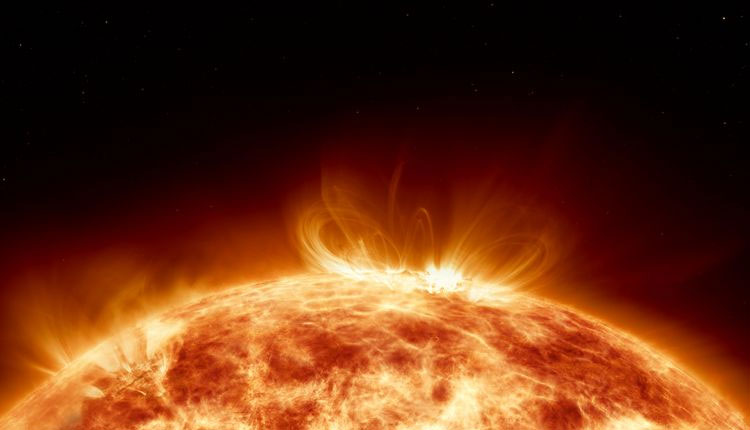Bengaluru: A colossal solar storm is hurtling towards Earth at an alarming speed, threatening to cause widespread disruption and havoc across the globe. According to the United States space agency NASA, the impending solar storm is a result of a powerful solar flare that erupted from the sun’s surface on Thursday. The flare, classified as an X 2.8 -category event, has created a coronal mass ejection (CME) that is expected to impact Earth on December 17.
CMEs are clouds of solar plasma and magnetic field that are ejected into space following a solar explosion. As these clouds travel through space, they expand and can cause significant geomagnetic disturbances when they interact with the magnetic fields of planets, including Earth.
Scientists predict that the impending solar storm could trigger geomagnetic storms on Earth on December 15 or 16, with the most significant impact expected on December 17. During these geomagnetic storms, the Earth’s magnetic field is disrupted, leading to various effects, including:
– Interference with satellite communications: The charged particles in the solar storm can cause disruptions to satellite signals, affecting communications systems, including GPS navigation and satellite TV.
Today’s X2.8-class solar flare is the most intense solar flare since September 10, 2017 (2,295 days ago).
Credit: NASA/Solar Dynamics Observatory, 131 Angstroms pic.twitter.com/UY3aOifH2C— Space Weather Watch (@spacewxwatch) December 14, 2023
– Power grid disruptions: Geomagnetic storms can induce strong electric currents in power lines, leading to power outages and potential damage to electrical infrastructure.
– Aviation and space travel disruptions: Increased radiation levels associated with the solar storm can pose a risk to aircraft and spacecraft, potentially affecting flight schedules and astronaut safety.
In preparation for the impending solar storm, experts are urging governments, businesses, and individuals to take precautionary measures. These measures include:
– Monitoring and protecting critical infrastructure: Governments and utilities should monitor the solar storm’s progress and take steps to protect critical infrastructure, such as power grids and communication networks, from potential disruptions.
– Adjusting flight schedules and spacecraft operations: Aviation authorities and space agencies should consider adjusting flight schedules and spacecraft operations to minimize the impact of the solar storm on aircraft and astronauts.
– Public awareness and education: Governments and scientific organizations should educate the public about the potential effects of the solar storm and provide guidance on how to stay safe during the event.
As the solar storm approaches Earth, scientists continue to monitor its progress closely and assess its potential impact. Individuals and organizations are advised to stay informed and follow the guidance of experts to minimize the risks associated with this significant space weather event.



Comments are closed.